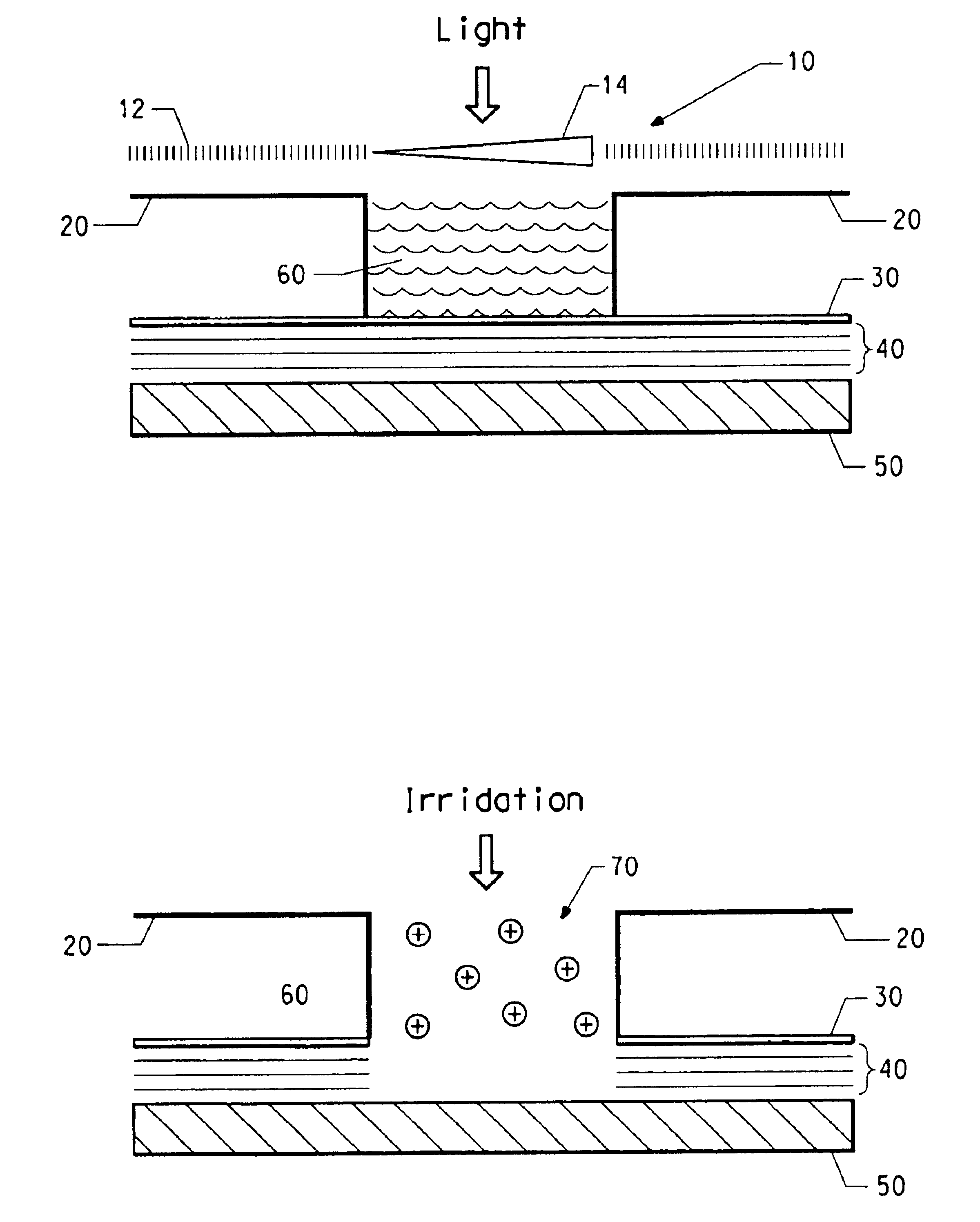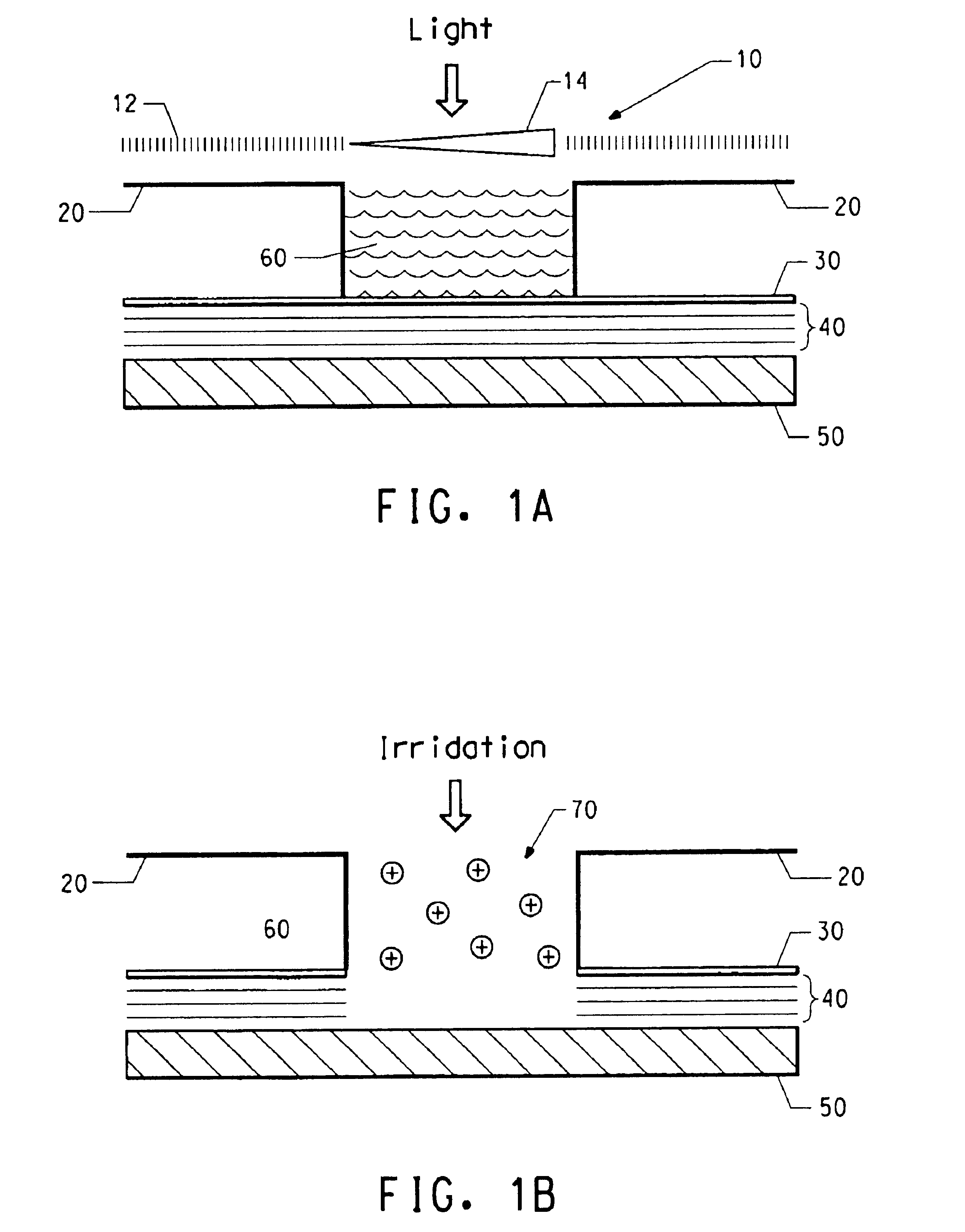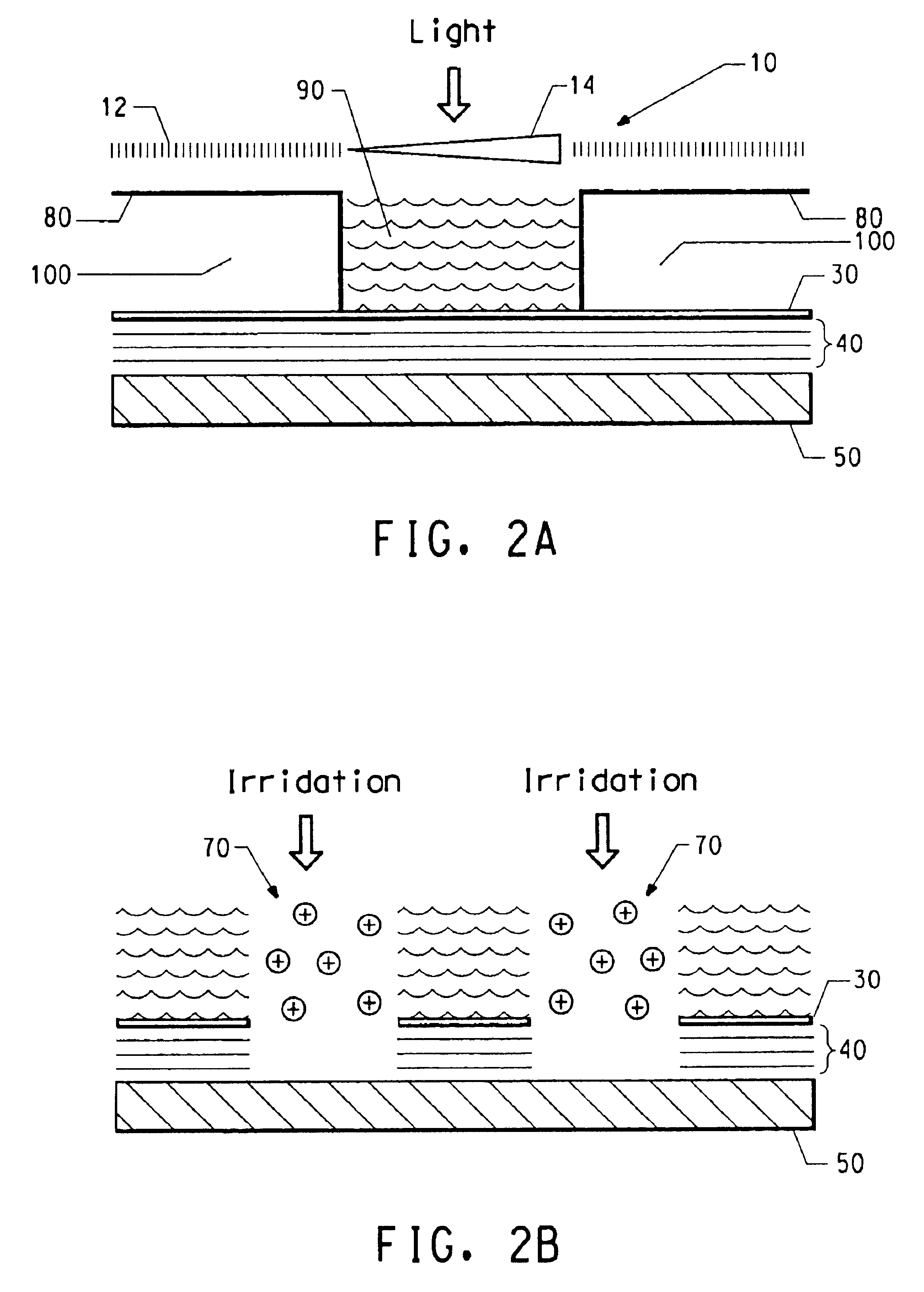Method for providing nano-structures of uniform length
a nano-structure, uniform technology, applied in the field of nanotechnology, can solve the problems of insufficient length, insufficient length, and insufficient efficiency of electron transport between nano-devices, and achieve the effect of more precise cutting
- Summary
- Abstract
- Description
- Claims
- Application Information
AI Technical Summary
Benefits of technology
Problems solved by technology
Method used
Image
Examples
example 1
Application of a Positive Resist to Nanotube Cutting Using a Polymeric Matrix as the Dispersant Layer
[0186]A dispersion of 0.1% (w / w) carbon nanotubes in Shipley (Marlborough, Mass.) AR2 antireflective coating (ARC), was prepared by sonication in a water bath for 8 hours. This dispersion was spun onto a 4 inch silicon wafer at a speed of 2600 RPM for 30 seconds, then the wafer was baked at 205° C. for 1 minute. Shipley positive photoresist UV 113.4 was spun onto the wafer at a speed of 2800 RPM for 30 s. The wafer was then baked at 135° C. for 1 minute. The coated wafer was exposed through a standard resolution pattern photomask with 248 nm light at an intensity of 55 mJ / cm2 (using a Nikon NSR 1505 EX-1 stepper Tokyo, Japan). The exposed wafer was baked at 130° C. for 90 seconds, then developed for 45 s in AZ 300 MIF an aqueous base developer (Clariant Corp., Somerville, N.J.), rinsed with deionized water, and dried with filtered nitrogen. This left the dispersant layer revealed in ...
example 2
Application of a Positive Resist to Nanotube Cutting Using a Different Polymeric Matrix as the Dispersant Layer
[0189]A dispersion of 0.01% (w / w) carbon nanotubes in Brewer DUV 52 antireflective coating (ARC) (Brewer Science, Inc., Rolla, Mo.), was prepared by sonication. This dispersion was spun onto a 4 inch silicon wafer at a speed of 6000-6200 RPM for 30 seconds, then the wafer was baked at 205° C. for 1 minute. Shipley positive photoresist UV 113.4 was spun onto the wafer at a speed of 2800 RPM for 30 s. The wafer was then baked at 135° C. for 1 minute. The coated wafer was exposed through a patterned photomask with 248 nm light at an intensity of 25 mJ / cm2 (using a Nikon NSR 1505 EX-1 stepper Tokyo, Japan). The exposed wafer was baked at 130° C. for 60-90 seconds, then developed for 45 s in AZ 300 MIF an aqueous base developer (Clariant Corp., Somerville, N.J.), rinsed with deionized water, and dried with filtered nitrogen. This left the dispersant layer revealed in the uv-expo...
example 3
Application of a Negative Resist to Nanotube Cutting Using a Polymeric Matrix as the Dispersant Layer
[0192]Carbon nanotubes were dispersed in 20 mL Shipley AR2 antireflective coating and sonicated in a water bath for 12 hours. This dispersion was spun onto a 4 inch silicon wafer at a speed of 2600 RPM for 30 seconds, then the wafer was baked at 205° C. for 1 minute. Shipley negative photoresist UVN30 was spun onto the dispersant layer of the wafer at a speed of 3000 RPM for 30 s. The wafer was then baked at 110° C. for 1 minute. The coated wafer was exposed through a standard resolution pattern photomask with 248 nm light at an intensity of 28.5 mJ / cm2 (using a Nikon NSR 1505 EX-1 stepper). The exposed wafer was baked at 105° C. for 60 seconds, then developed for 30 seconds in AZ 300 MIF developer, rinsed with DI water, and dried with filtered nitrogen. This left the dispersant layer revealed in the UV-unexposed regions. Wafer 154 was etched in a 90 W oxygen plasma for 30 seconds us...
PUM
| Property | Measurement | Unit |
|---|---|---|
| length | aaaaa | aaaaa |
| length | aaaaa | aaaaa |
| length | aaaaa | aaaaa |
Abstract
Description
Claims
Application Information
 Login to View More
Login to View More - R&D
- Intellectual Property
- Life Sciences
- Materials
- Tech Scout
- Unparalleled Data Quality
- Higher Quality Content
- 60% Fewer Hallucinations
Browse by: Latest US Patents, China's latest patents, Technical Efficacy Thesaurus, Application Domain, Technology Topic, Popular Technical Reports.
© 2025 PatSnap. All rights reserved.Legal|Privacy policy|Modern Slavery Act Transparency Statement|Sitemap|About US| Contact US: help@patsnap.com



